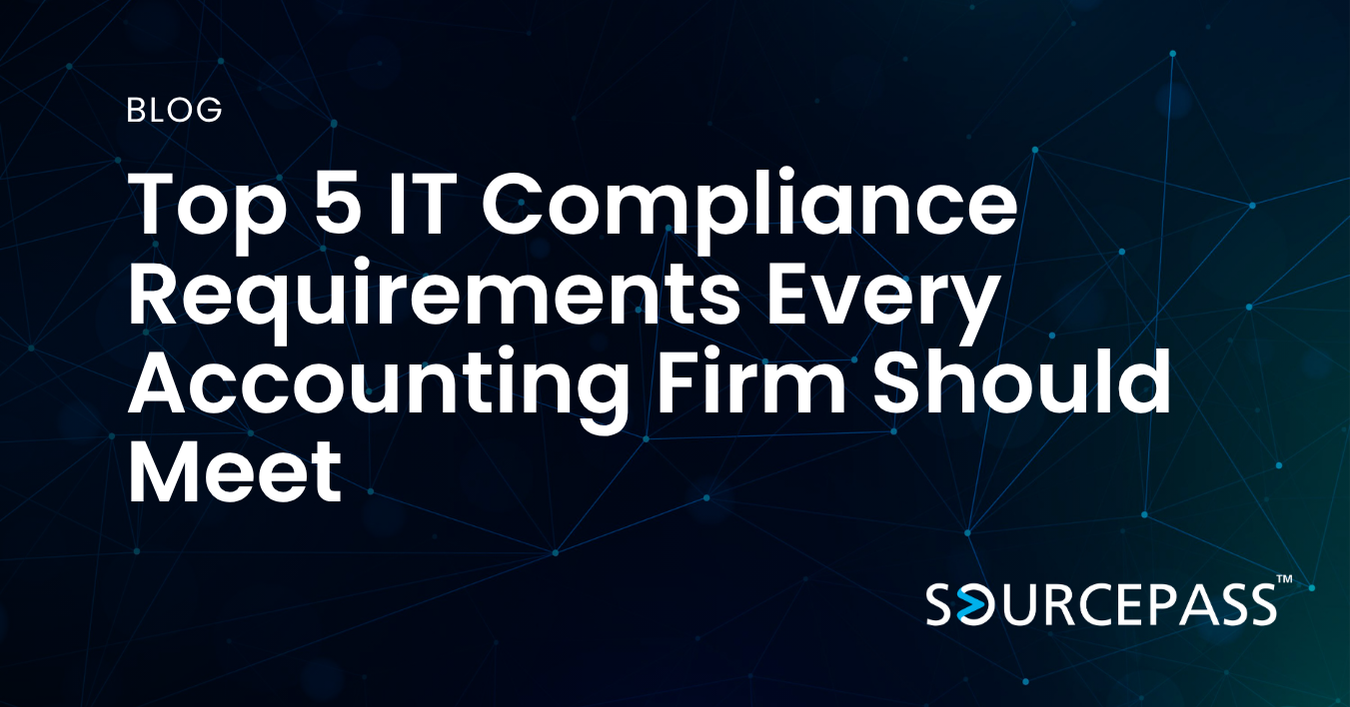Why Your Business Needs to Audit User Account and Security Permissions
Mar 14, 2025 Alex Davis Security & Compliance 4 min read



Maintaining control over user accounts and security permissions is critical to safeguarding sensitive information, preventing unauthorized access, and ensuring regulatory compliance.
Businesses that fail to properly manage user accounts and security permissions risk exposure to data breaches, internal threats, and compliance violations that can severely harm their reputation and bottom line.
In this article, we explore why having a documented User Account and Security Permissions Audit Policy is crucial for businesses, and we outline the key components that should be included in the policy.
Why Businesses Need a User Account & Security Permissions Audit Policy
A User Account and Security Permissions Audit Policy is essential for proactively managing and auditing user access to systems and data.
This policy provides a structured approach to ensure that only authorized individuals have access to specific resources and that access rights are properly maintained, reviewed, and adjusted as needed.
Regular audits of user accounts and permissions help businesses minimize risks, enhance security, and maintain compliance with various regulatory standards. Here are some of the main reasons:
- Mitigates the Risk of Unauthorized Access: User accounts and permissions determine who can access sensitive data, systems, and applications. Without effective management, unauthorized users or insiders may gain access to critical business information. Regular audits help identify and correct inappropriate access permissions, ensuring that only authorized individuals can access sensitive data and resources. By maintaining a policy that requires frequent audits, businesses can prevent unauthorized access before it becomes a security risk or data breach.
- Prevents Data Breaches: Data breaches often occur when employees or external actors gain unauthorized access to sensitive or confidential information. This could be the result of poorly managed user accounts, excessive permissions, or a failure to promptly revoke access when an employee leaves the business.
A well-documented audit policy helps prevent data breaches by ensuring that access controls are enforced and that permissions are regularly reviewed to identify and eliminate potential vulnerabilities. This ensures that sensitive data is protected from unauthorized exposure.
- Enhances Compliance with Regulations: Regulatory standards such as GDPR, HIPAA, PCI-DSS, and SOX require businesses to implement strict controls over access to sensitive data and ensure that access rights are regularly reviewed. Failure to comply with these regulations can result in costly fines, penalties, and damage to a business’s reputation.
A documented audit policy is an essential part of maintaining compliance. It provides a framework for monitoring and verifying that user access and security permissions are in line with industry standards and regulatory requirements.
-
Reduces the Risk of Insider Threats: Insider threats can be difficult to detect, as they often involve individuals who already have authorized access to systems and data. These threats may arise from disgruntled employees, contractors, or partners who exploit their access for malicious purposes.
Regularly auditing user accounts and security permissions helps detect and prevent insider threats by ensuring that employees only have access to the resources they need to perform their jobs. This minimizes the risk of unauthorized actions or data manipulation by insiders.
- Improves Overall Security Posture: By auditing user accounts and permissions, businesses gain a clearer picture of their security posture. Identifying unused or inactive accounts, excessive permissions, and potential vulnerabilities allows businesses to improve security across the entire IT environment. Additionally, regular audits help ensure that security measures are up to date, aligned with best practices, and effectively mitigate potential risks.
Key Components of a User Account & Security Permissions Audit Policy
A comprehensive User Account and Security Permissions Audit Policy should address several key areas to ensure that user access and security permissions are properly managed, monitored, and adjusted. Below are the essential components that should be included in the policy:
Purpose and Scope
The policy should begin with a clear statement of purpose, outlining the need for regular audits of user accounts and permissions. It should also define the scope, specifying which systems, applications, and resources are subject to audits.
This section sets the tone for the policy and clarifies its objectives, such as ensuring proper access control, protecting sensitive data, and maintaining compliance.
Roles and Responsibilities
The policy should specify the roles and responsibilities of individuals involved in the auditing process. This typically includes:
-
IT Administrators: Responsible for reviewing and managing user accounts and permissions across systems.
-
Compliance Officers: Oversee the audit process to ensure compliance with regulatory requirements.
-
Department Heads/Managers: Review and validate user access for their respective teams to ensure that permissions align with job functions.
-
Auditors: Conduct periodic reviews of user accounts, permissions, and access logs.
Clearly defining roles helps ensure accountability and effective management of user access controls.
Audit Frequency and Schedule
The policy should establish a clear timeline for when audits will occur. This includes:
- Regular Audits: Define how often audits will take place (e.g., quarterly, semi-annually, or annually).
- Triggered Audits: Specify situations that may trigger an ad-hoc audit, such as the termination of an employee, role changes, or significant system updates.
- Audit Results Review: Define when and how audit results will be reviewed by relevant stakeholders to identify potential issues.
Having a scheduled and consistent approach to audits ensures that access controls are continuously monitored and updated as needed.
User Account Management Procedures
The policy should outline procedures for managing user accounts throughout their lifecycle, including:
- Account Creation: Define the process for creating new user accounts, including necessary approval and documentation.
- Account Modification: Specify how user roles and permissions should be modified as their job responsibilities change.
- Account Deactivation: Establish a process for deactivating or deleting accounts when employees leave the business or no longer require access to specific systems.
These procedures ensure that user accounts are properly managed to prevent unauthorized access.
Permissions Review and Validation
The policy should require regular reviews of user permissions to ensure they are appropriate for their role. This includes:
- Role-Based Access Control (RBAC): Ensure that users are granted the minimum necessary permissions based on their job function (principle of least privilege).
- Permissions Audits: Regularly review and validate user permissions to ensure they align with the principle of least privilege and that users do not have unnecessary access to sensitive data.
This helps prevent users from having excessive or inappropriate access rights.
Access Logging and Monitoring
The policy should require that access to sensitive systems and data is logged and monitored regularly. This includes:
- Access Logs: Maintain detailed logs of user activity and access attempts to critical systems and data.
- Monitoring Tools: Use automated tools to monitor and detect unusual or unauthorized access patterns.
- Audit Trail: Ensure that audit logs are tamper-proof and retained for a specified period for compliance purposes.
By keeping detailed logs, businesses can track user actions and detect potential security breaches early.
Incident Response and Remediation
The policy should outline procedures for addressing and remediating issues discovered during an audit. This includes:
- Identifying Violations: Procedures for identifying when user accounts or permissions violate security policies or regulatory requirements.
- Remediation Steps: Steps for revoking inappropriate permissions, deactivating compromised accounts, or taking corrective action in response to violations.
- Reporting and Documentation: Ensure that audit findings are documented and reported to the appropriate parties for further action.
Having a structured response process ensures that issues are promptly addressed and mitigated.
Consequences of Non-Compliance
The policy should specify the consequences of failing to comply with the user account and security permissions audit process. This may include disciplinary action, retraining, or other corrective measures for individuals or teams that do not follow the policy.
Learn more about the importance of user account and security permissions with Sourcepass
Protect sensitive data, improve security posture, and maintain regulatory compliance.
Contact Sourcepass to speak with a Sourcepass Specialist to learn more!
Subscribe To
Sourcepass Insights
Sourcepass Insights
Stay in the loop and never miss out on the latest updates by subscribing to our newsletter today!
.png?width=500&height=100&name=White%20Logo%20-%20Transparent%20Tag%20(3).png)



